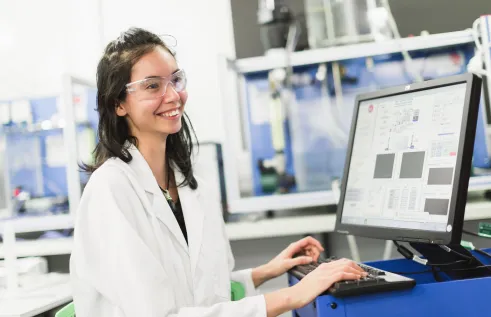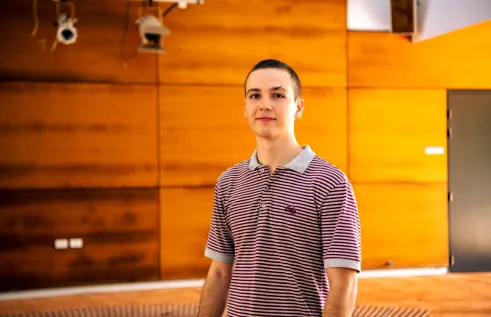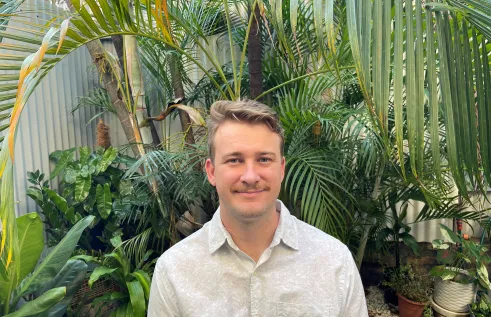Future study
The engineering innovations about to change our world

From ancient inventions like plumbing systems to the revolutionary impact of the internet, engineering minds have always been solving problems to improve the way humans live, work and play.
Let’s look at three engineering innovations from history that shaped our modern world, and three more that will be changing our future according to the engineering experts at Charles Darwin University.
Civil and Structural Engineering
From the past: Ancient concrete
Structures like the Pantheon and the aqueducts are mighty impressive feats of ancient engineering, but let’s start with what helped them stand the test of time: Roman concrete.
While the Romans weren’t the first civilisation to use concrete, they can be attributed to its widespread use. Their combination of volcanic ash, lime and seawater created a ultra-durable, water-resistant material.
The little white chunks found across Roman concrete structures known as lime clasts were previously thought to be a design flaw. Only very recently (2023) have researchers discovered that they are in fact a design feature, helping the concrete to ‘heal’ itself when cracks appeared and explaining the ultra-durability of these ancient structures that are still standing 2,000 years later.
For the future: Sustainable design
According to CDU's Dr Milad Bazli
With climate change impacting our future, sustainability is a top priority. Civil engineers are developing green concrete using industrial byproducts to reduce CO2 emissions and creating self-healing concrete to extend the lifespan of structures.
Additionally, designing energy-efficient and climate-resilient buildings with passive solar design, green roofs, and renewable energy integration is essential.
The future of civil engineering lies in balancing human needs with environmental stewardship, ensuring sustainable development for future generations. Civil and structural engineers will be tasked with creating innovative infrastructure that takes the natural environment and its preservation into account.
From developing ‘greener’ construction materials like engineered wood and recycled concrete to reduce the carbon footprint of steel and concrete all the way to ensuring infrastructure can withstand the growing incidence of extreme weather like heatwaves and floods, civil and structural engineers are at the forefront of innovation and thinking outside of the box to ensure our homes, workplaces and cities are around for the generations to come.
Electrical and Electronics Engineering
From the past: The light bulb
There’s a reason why light bulbs are still used as a symbol of a bright idea. The invention of the light bulb revolutionised domestic and commercial life, lengthening the workday, reducing the injuries and fatalities caused by oil lamps and fire-based light in the home, and creating opportunities for entertainment and leisure late into the night.
And while you may remember being taught that Thomas Edison was its inventor way back in primary school, it took many small improvements on the ideas of other scientists and inventors before Edison’s famous patent was granted in early 1870.
So while Edison isn’t the only inventor we should thank for our light-filled homes and cities, he improved on the performance of previous creations and commercialised his product. In doing so, he changed the way our world operates.
For the future: Photonics
According to CDU's Associate Professor Erwin Chan
Photonics is the science of using light, like lasers and fibre optics, for technology.
CDU research focuses on photonic signal processing – that is, the conversion of radio frequency signals into laser light and using photonic technology to process the radio frequency signal. This transcends the traditional function of photonics, which has focused on signal transmission, to open new possibilities for processing high bandwidth signals.
Photonic processing harnesses the unique, high time-bandwidth product capabilities of photonic systems to overcome the inherent bottlenecks caused by limited sampling speeds in electrical signal processors, together with bringing advantages in wide bandwidth, high operating frequency, immunity to electromagnetic interference, reconfigurability, tunability and high resolution.
Future advances in photonics could make a big difference in our daily lives.
We'll have faster internet, so video calls, streaming, and downloads will be smoother and quicker. Medical treatments will improve with better imaging and less invasive surgeries, leading to faster recovery times. We'll see brighter, clearer screens on our TVs, phones and computers. Solar panels will become more efficient, making renewable energy cheaper and more accessible. Finally, products will be better and less expensive thanks to more precise manufacturing.
Defence and radar technology can also be greatly improved. This means better security with more accurate radar systems to detect threats from far away, clearer images for surveillance even in bad weather, and safer navigation for ships, planes, and drones.
Photonics can also make communication faster and more secure for military and emergency services and help develop precise laser weapons that can target threats accurately. All of these improvements contribute to making our world safer and more secure.
In short, photonics will make our lives more connected, healthier, greener, and convenient.
Mechanical Engineering
From the past: Printing press
This was a feat of mechanical engineering that dramatically altered the way humans shared knowledge and ideas. Prior to Johannes Gutenberg’s printing press, books were copied by hand.
Now, while movable type printing wasn’t exactly a Gutenberg idea, his 15th century printing press WAS the first to mechanise the process.
Gutenberg’s design built upon earlier inventions, including a dose of inspiration from the screw-type wine press. His press allowed text to be arranged from pre-cast letters instead of being painstakingly carved from a block of wood, before being inked and topped with a sheet of paper to go through the roller.
Though still quite a hands-on process, Gutenberg’s printing press mechanised an otherwise incredibly laborious task and allowed books and information to be accessed by a much wider audience.
For the future: Advanced manufacturing
According to CDU's Professor Kannoorpatti Krishnan and Dr Naveen Kumar Elumalai
Traditional manufacturing such as casting and metal forming require large factories to make profitable business.
In recent times the world has seen how the availability of goods was affected by the global supply chain. Climate change and scarcity of resources requires sustainable and efficient manufacturing processes that can fulfill the need for modern and intricate parts without the need for large factories.
Enabling local production and reducing dependency and reducing disrupting risks requires new methods of manufacturing. Manufacturing products with the use of digital technologies such as 3D printing, CNC machining and robotics will be the methods of future.
At Charles Darwin University, research is being done in the fields of additive manufacturing using cold spray, welding, and electrospinning. The university has an alliance with SPEE3D, an Australian manufacturing company with its R&D centre placed inside the university. Check out the Advanced Manufacturing Alliance here.
Development of new materials, methodologies for efficient manufacturing, machine learning methods to reduce defects and production of novel metal powders are some of the areas being pursued. Development of new nanomaterials using electrospinning is being applied to catalysis and energy production will improve our efforts to improve sustainability and reduce the effects of climate change.
Make your own mark on the future of innovation with a Bachelor of Engineering Science at Charles Darwin University. Select from the civil and structural, electrical and electronics, or mechanical engineering specialist streams.
Related Articles

Renewables to power demand for more Australian engineers
Australia’s move to renewable energies will need engineers to help build a better future
Read more about Renewables to power demand for more Australian engineers
Daniel is engineering his future close to home
Like most high schoolers, the decision of what to do after school was a tricky one for Daniel. As he moved closer to finishing school, the decision became clear. Studying a Bachelor of Engineering Science/Master of Engineering at CDU will allow Daniel to pursue his career as fast as possible while staying close to home.
Read more about Daniel is engineering his future close to home
Engineering sparked a new career for electrician Matt
Winning not one but two scholarships has changed the course of Matt’s career. After working as an electrician for 10 years and seeing the projects and positions that would be available to him if he pursued further study, Matt took the plunge to become a mature age engineering student.
Read more about Engineering sparked a new career for electrician Matt


